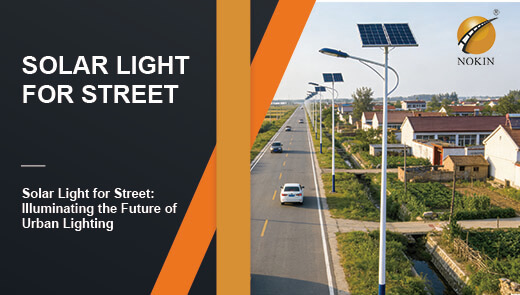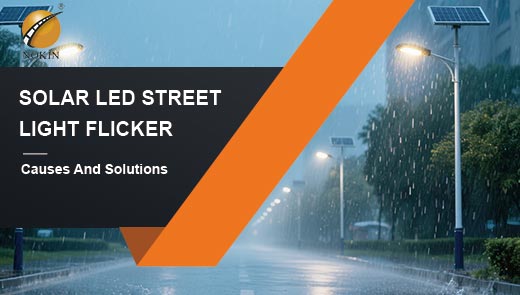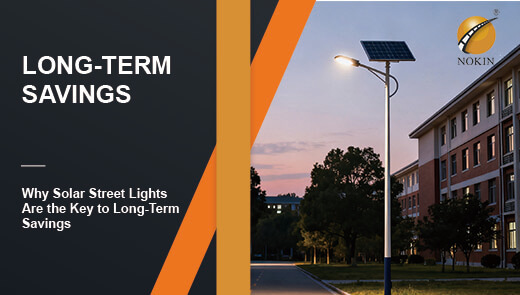Solar Lighting in Winter: Performance Put to The Test by The Cold
The frigid winter environment poses a unique “performance test” for outdoor solar street lights. Many municipal departments, residential property managers, and rural developers wonder: Can solar street lights maintain stable illumination during cold weather? Will the energy collection of their photovoltaic panels, battery storage capacity, and nighttime illumination output be significantly reduced? In reality, while winter use of solar street lights presents challenges like low temperatures and shorter daylight hours, these are not insurmountable. This article aims to dispel common misconceptions about winter solar street lights. From a practical application perspective, it offers scientific usage recommendations and performance optimization solutions to help everyone efficiently and reliably utilize solar street lights in cold climates.

Four Key Considerations for Solar Street Lights in Cold Climates
Winter Solar Street Light Photovoltaic Panels
The long-held belief that “cold weather reduces the efficiency of solar street light photovoltaic panels” is actually a common misconception. Solar street light panels generate electricity from sunlight, not heat. As long as the accompanying batteries can withstand low temperatures, cold weather itself does not directly affect the panels' energy collection. More notably, low temperatures can actually enhance energy output from solar street light panels. At lower temperatures, electrons remain relatively stationary. When sunlight strikes the panels, high-energy photons excite these low-energy electrons, creating a larger voltage difference. This conversion generates more electrical energy, providing a more substantial initial charge for nighttime illumination.
Winter Solar Street Light Batteries and Energy Storage
During winter, the battery and energy storage components of solar street lights present the core challenge. Low temperatures cause a decrease in battery current, which may indirectly reduce the energy conversion efficiency of photovoltaic panels and even affect the duration and brightness of nighttime illumination. However, selecting the appropriate battery type can effectively address this issue. Nickel-metal hydride (NiMH) batteries, with their outstanding performance, emerge as the ideal choice for solar street lights in cold regions. NiMH batteries' wide operating temperature range easily handles winter cold, and their lifespan exceeding 10 years provides long-term, stable energy storage for solar street lights. This ensures excellent illumination during winter nights, preventing “blackouts” caused by battery issues.
Shorter Winter Daylight Hours
Reduced daylight hours in winter significantly impact the energy collection efficiency of solar street light photovoltaic panels. While these panels achieve peak power generation under direct sunlight, they can still absorb and convert scattered light throughout the day, even during overcast or cloudy conditions. To address shorter daylight hours without additional time or financial investment, optimize solar street light installation methods: In northern China and North America, orient solar panels southward and adjust tilt angles based on local latitude (e.g., 45°-55° tilt in winter for regions between 30°-40° N latitude). This maximizes solar absorption, compensates for reduced daylight energy, and ensures reliable nighttime illumination.
Precise Sizing
Whether deployed on municipal roads, rural paths, or residential courtyards, accurate system sizing is crucial for efficient operation—especially during winter. This involves balancing the photovoltaic panel power, battery capacity, and LED lamp power to suit regional climates and lighting requirements.
Winter Solar Street Light Performance: Five Optimization Methods to Boost Efficiency
Keep Solar Panel Surfaces Clean
During winter, dust, fallen leaves, and snow easily accumulate on solar panel surfaces. These obstructions severely block sunlight and reduce power generation efficiency. Therefore, regular cleaning is fundamental to winter maintenance. Establish a cleaning schedule based on local weather conditions (mandatory within 24 hours after snowfall) to promptly remove debris and ensure maximum sunlight absorption. Additionally, selecting high-efficiency photovoltaic panels is beneficial. Their advanced photovoltaic conversion technology enables efficient light capture even under weak winter sunlight and cloudy conditions, mitigating the impact of obstructions and ensuring sufficient power supply for solar street lights.

Adjusting the Tilt Angle of Solar Street Light Panels
During winter, the sun's altitude is low. If solar street light panels maintain their summer tilt angle, sunlight utilization efficiency will be significantly reduced. Adjusting the tilt angle is crucial for boosting winter power generation. Calculations can be based on local latitude: for example, in a region at 35°N latitude, the summer tilt angle is approximately 30°, while the winter angle can be adjusted to 50°. This allows the panels to better align with the low-angle sun, increasing both the surface area exposed to sunlight and the duration of exposure. Consequently, power generation improves, ensuring the solar street lights illuminate effectively at night.
Utilizing Solar Street Light Battery Energy Storage
During winter, the energy storage function of solar street light batteries becomes increasingly vital. On sunny days, excess electricity generated by the photovoltaic panels can be stored in the batteries via the controller. On cloudy days or at night, the batteries release stored energy to power the lamp heads, ensuring illumination. This storage method mitigates challenges posed by shorter daylight hours and unstable weather in winter, significantly enhancing the endurance and operational reliability of solar street lights. It prevents premature shutdowns caused by insufficient daily power generation.
Investing in Solar Street Lights with High-Efficiency Photovoltaic Panels
For regions experiencing severe winter cold and poor sunlight conditions, investing in solar street lights equipped with high-efficiency photovoltaic panels is a wise choice. High-efficiency panels (such as monocrystalline silicon panels with conversion efficiencies ≥23%) maintain high power generation efficiency even in low-light environments.
Avoid Shading of Solar Panel
During winter, the low sun angle amplifies the impact of shadows cast by obstructions like trees and buildings on solar panels. Even minor shading can reduce panel output by over 30%. Therefore, thorough site surveys are essential before installation: ensure no tall trees or structures within 5 meters of the panels create shadows before 9 AM or after 3 PM. If potential obstructions exist, consult professionals to adjust the installation location, guaranteeing uninterrupted sunlight exposure throughout the day and boosting power generation.
Key Winter Maintenance Points for Solar Street Lights
Regularly Inspect the Connection Status of Solar Street Light Components
Winter cold temperatures may cause contraction and loosening at connection points between components, such as the wiring terminals between the photovoltaic panel and controller, or the wiring interfaces between the battery and lamp head. Loose connections increase circuit resistance, leading to energy transmission losses and potentially causing faults like flickering or failure to illuminate. It is recommended to inspect the connection status of solar street light components every two weeks. Focus on checking whether the terminals are secure and whether the insulation of the wiring has cracked due to low temperatures. If problems are found, tighten or replace them promptly to ensure stable circuit connections and guarantee the normal operation of the street lights.
Monitor Battery Insulation and Condition
Although cold-resistant batteries like NiMH can operate in low temperatures, prolonged exposure below -20°C may still affect battery activity and lifespan. Install insulation sleeves around the battery compartment using flame-retardant, low-temperature-resistant polyurethane insulation to minimize heat exchange between the battery and the cold environment.
Additionally, weekly inspections via the solar street light controller should monitor parameters like battery voltage and charge/discharge currents. If persistently low battery voltage or reduced charge/discharge efficiency is detected, promptly investigate the cause and replace batteries if necessary to prevent disruptions to nighttime illumination.
Cleaning Solar Street Light Photovoltaic Panels and Lamp Head Components
Winter brings frequent snowfall and smog, causing snow and dust to accumulate on solar street light photovoltaic panels. Debris may also collect on lamp head housings and light diffusers. Obstructed photovoltaic panels directly reduce power generation, while lamp head debris compromises illumination effectiveness and may even cause structural damage due to snow weight. Weekly cleaning is required: - Wipe the photovoltaic panel surface with a soft cloth to remove dust. - Gently scrape off snow using a plastic scraper to avoid scratching the panel glass. - Wipe the light diffuser with a dry cloth and inspect the housing for cracks. Ensure proper sealing to prevent rain or snow from infiltrating and damaging the light head circuitry, thereby safeguarding the solar street light's illumination performance.

Solar Street Light Selection Recommendations for Different Cold Environments
Solar Street Light Selection for High-Altitude Cold Regions
High-altitude cold regions feature not only low temperatures but also intense ultraviolet radiation and strong winds, demanding higher weather resistance from solar street lights. Photovoltaic panels should be selected with UV resistance and wind load capacity, such as those featuring 3.2mm thickened tempered glass covers and aluminum alloy frames exceeding 2.0mm thickness to withstand intense UV exposure and strong wind impacts. Light heads should feature a protection rating of ≥IP67 for waterproof and dust proof performance. Pair these with freeze-resistant LED light sources to ensure reliable illumination in temperatures below -30°C, preventing “no-light” incidents caused by cold-start difficulties.
Solar Street Light Selection for Heavy Snowfall Regions
Frequent winter snowfall in high-snowfall regions can cover photovoltaic panels, reducing power generation. Prioritize panels with self-cleaning capabilities (e.g., nano-hydrophobic coatings) that allow snow to slide off quickly after melting, reducing manual cleaning. Additionally, install panels at a steeper angle (5°-10° greater than standard) to facilitate snow shedding. Select lamp heads with an arched top design to prevent snow accumulation, ensuring stable illumination during snowy conditions.
Differences in Solar Street Light Selection for Urban Cold Streets vs. Rural Cold Areas
Solar street lights for urban cold streets must accommodate high foot traffic and extended illumination periods (typically 10-12 hours), with nearby grid access. Prioritize “high-efficiency energy storage + emergency grid backup” configurations—pairing large-capacity NiMH batteries with reserved grid recharge interfaces. During prolonged cloudy periods, insufficient battery power can be temporarily replenished via the grid to maintain uninterrupted lighting.
For solar street lights in rural cold regions, where lighting primarily serves basic nighttime illumination, a “energy-efficient LED lamp head + medium-capacity battery” combination reduces costs. Simultaneously, increasing the photovoltaic panel power (e.g., selecting panels above 120W) leverages the rural environment's characteristics of minimal shading and relatively favorable sunlight conditions. This boosts power generation to meet basic lighting requirements.
The stable operation of solar street lights in winter hinges on scientific selection, precise maintenance, and rational optimization. By ensuring these elements, solar street lights can continue to deliver efficient illumination even amid low temperatures and reduced daylight hours, providing reliable lighting for outdoor environments during cold seasons.




